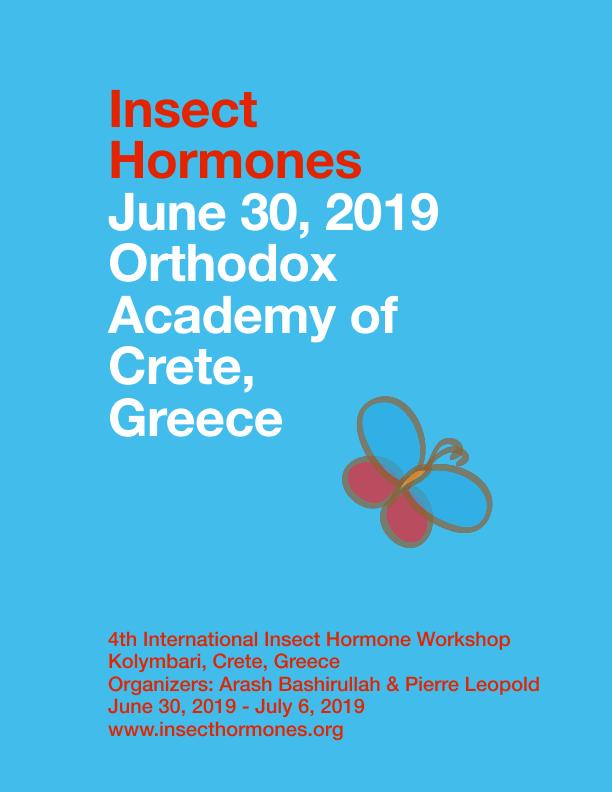Evento
Progression through pupariation behaviors requires dilp8-Lgr3 signaling between the cuticle epidermis and thoracic CNS neurons
Garelli, Andres ; Heredia, Fabiana; Volonté, Yanel Andrea
; Heredia, Fabiana; Volonté, Yanel Andrea ; Pereirinha, Joana; Casimiro, Andrea; Viegas, Filipe; Belém, Claudia; Tanaka, Kohtaro; Cardoso, Gisela; Macedo, Andre; Leal, Ana; Kotowicz, Malwina; Prado Spalm, Facundo Heber
; Pereirinha, Joana; Casimiro, Andrea; Viegas, Filipe; Belém, Claudia; Tanaka, Kohtaro; Cardoso, Gisela; Macedo, Andre; Leal, Ana; Kotowicz, Malwina; Prado Spalm, Facundo Heber ; Mendes, César; Gontijo, Alisson M.
; Mendes, César; Gontijo, Alisson M.
 ; Heredia, Fabiana; Volonté, Yanel Andrea
; Heredia, Fabiana; Volonté, Yanel Andrea ; Pereirinha, Joana; Casimiro, Andrea; Viegas, Filipe; Belém, Claudia; Tanaka, Kohtaro; Cardoso, Gisela; Macedo, Andre; Leal, Ana; Kotowicz, Malwina; Prado Spalm, Facundo Heber
; Pereirinha, Joana; Casimiro, Andrea; Viegas, Filipe; Belém, Claudia; Tanaka, Kohtaro; Cardoso, Gisela; Macedo, Andre; Leal, Ana; Kotowicz, Malwina; Prado Spalm, Facundo Heber ; Mendes, César; Gontijo, Alisson M.
; Mendes, César; Gontijo, Alisson M.
Tipo del evento:
Congreso
Nombre del evento:
Insect Hormones 2019
Fecha del evento:
30/06/2019
Institución Organizadora:
Bashirullah, Arash;
Leopold, Pierre;
Título del Libro:
4th International Insect Hormone Workshop
Editorial:
Insect Hormones
Idioma:
Inglés
Clasificación temática:
Resumen
Higher dipterans undergo metamorphosis within a puparium, a protective capsule made up of the reshaped and hardened cuticle of the last larval instar. Puparium formation (pupariation) in Drosophila starts when wandering stage larvae reduce their locomotion and initiate increasingly strong whole body contractions that together with the internalization of the three anteriormost body segments remodel the body and cuticle, reducing their length/width ratio from ~5 to ~3. This behavior lasts 5-10 min and culminates with the extrusion of a proteinaceous mix (glue) produced by the salivary glands. The animal then slowly moves forward in a caterpillar-like fashion, traveling about half its length for ~1 min to its final pupariation site. We call this behavior glue-spreading behavior (GSB), as it helps to spread the glue over the ventral part of the animal, promoting its attachment to the underlying substrate. Following GSB, the final shape of the puparium is set, even though weak and periodic contractions occur over the next 40-50 min (post-GSB), the operculum becomes defined, and the cuticle (i.e., the future puparium) starts to gradually sclerotize and tan. Here, we show that proper progression through three pupariation behaviors (pre-GSB, GSB, and postGSB) requires the Dilp8-Lgr3 pathway, a relaxin-like pathway that has been previously implicated in controlling the timing of pupariation in animals carrying aberrantly growing imaginal discs. During pupariation, however, Dilp8-Lgr3 signaling is spatiallyand temporally-distinct: a strong, epidermis-derived dilp8 expression peak that starts at the pre-GSB phase of pupariation appears to signal via Lgr3 in a novel subpopulation of thoracic CNS neurons. While this signaling ensures partial progression through the preGSB phase, and total progression through GSB and post-GSB phases, it is not required for sclerotization and tanning. These results demonstrate a new transient epidermis to neuron signaling event that facilitates progression through the cascade of pupariationassociated behaviors.
Palabras clave:
DROSOPHILA
,
DILP8
,
LGR3
Archivos asociados
Licencia
Identificadores
Colecciones
Eventos(INIBIBB)
Eventos de INST.DE INVEST.BIOQUIMICAS BAHIA BLANCA (I)
Eventos de INST.DE INVEST.BIOQUIMICAS BAHIA BLANCA (I)
Citación
Progression through pupariation behaviors requires dilp8-Lgr3 signaling between the cuticle epidermis and thoracic CNS neurons; Insect Hormones 2019; Kolymbari; Grecia; 2019; 67-67
Compartir



